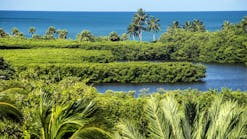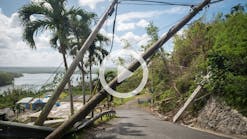The Ohio Department of Natural Resources (ODNR) released the final version of the Lake Erie Coastal Erosion Area Maps. The maps will be used to determine if a property is located in the designated coastal erosion area along Lake Erie.
According to The Daily Jeffersonian, the 2018 maps will replace the previous maps which were last updated in 2010. ODNR is required to measure coastal erosion rates along the Lake Erie shoreline under the state’s coastal management law. The coastal erosion area represents a designated area of land predicted to erodie within a 30-year period if no effective erosion control measures are present, and the objective of the program is to identify the hazards and mitigate economic losses.
Ohio’s section of Lake Erie has faced problems in recent years, as the Ohio EPA declared the western end of Lake Erie an impaired waterway due to toxic algae in March 2018.
“I’m very concerned about the negative consequences this could bring for our tourism and fishing industries for very little environmental gain,” said state EPA Director Craig Butler.
Regarding coastal erosion, cities such as Mentor, Ohio, have turned to retaining walls to combat erosion along Mentor Beach park under an emergency measure. During the retaining wall project, 500 ft of erosion control measures were installed. Another preventative measure was the installation of a modular system composed of boulders and other large rocks, which will act as a retaining wall.
And the coastal erosion control issues continue. This past fall, the U.S. Army Corps of Engineers embarked on a $1.3 million wetland restoration project covering 12 miles of coastal wetlands to mitigate erosion and cleanup storm water runoff. The construction of this project will help restore Port Clinton as a sub-habitat for Mississippi and Atlantic migratory flyways as well as improve storm water runoff quality.
The updated erosion maps will serve to inform future erosion mitigation efforts.
When the wetlands from the $1.3 million project are restored, more than half of the migratory species in North America will he able to use the area as a stopover habitat.
The 2018 coastal erosion maps are available online using the ODNR Div. of Geological Survey’s interactive map viewer here.
-
Read more about coastal erosion and Lake Erie here:






